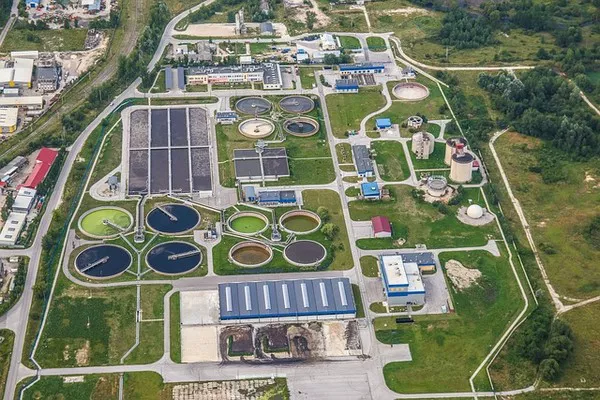Sewage treatment plants (STPs) play a vital role in maintaining public health and environmental sustainability by treating wastewater before it is discharged back into natural water bodies. These facilities utilize various processes to remove contaminants and pollutants from sewage, ensuring that the discharged water meets regulatory standards. This article explores the functions, processes, and significance of sewage treatment plants in modern society.
Function of Sewage Treatment Plants:
Sewage treatment plants are designed to perform several essential functions, including:
Wastewater Collection: STPs receive wastewater from various sources, including residential, commercial, and industrial areas, through an extensive network of sewer pipes.
Physical Treatment: The first stage of treatment involves physical processes such as screening and grit removal, where large objects, debris, and grit are removed from the wastewater to prevent damage to downstream equipment and facilitate subsequent treatment steps.
Biological Treatment: Biological treatment is a crucial process where microorganisms are utilized to break down organic matter present in the wastewater. This process typically occurs in aerated tanks where bacteria and other microorganisms degrade organic pollutants into simpler, less harmful substances like carbon dioxide and water.
Chemical Treatment: In some cases, chemical treatment is employed to enhance the removal of specific contaminants such as phosphorus and nitrogen. Chemicals like coagulants and flocculants are added to facilitate the precipitation and removal of these pollutants.
Disinfection: Disinfection is the final step in sewage treatment, aimed at eliminating harmful pathogens such as bacteria, viruses, and parasites from the wastewater. Common disinfection methods include chlorination, ultraviolet (UV) irradiation, and ozonation.
Processes Involved in Sewage Treatment:
Sewage treatment plants employ various physical, biological, and chemical processes to effectively treat wastewater. Some of the key processes include:
Preliminary Treatment: This stage involves the removal of large debris, such as sticks, rags, and plastics, through screening and grit removal. Grit chambers are used to settle out heavy inorganic solids like sand and gravel.
Primary Treatment: During primary treatment, suspended solids and organic matter are settled out of the wastewater in sedimentation tanks, also known as primary clarifiers. The settled sludge is then removed for further processing, while the partially treated wastewater undergoes secondary treatment.
Secondary Treatment: Secondary treatment primarily involves biological processes where microorganisms break down organic pollutants. This can occur in activated sludge systems, trickling filters, or sequencing batch reactors (SBRs). Aerobic bacteria consume organic matter, converting it into carbon dioxide, water, and more bacteria. This stage significantly reduces the biochemical oxygen demand (BOD) of the wastewater.
Tertiary Treatment: Tertiary treatment is an optional stage aimed at further polishing the effluent to meet specific quality standards or to remove specific contaminants. This may include additional filtration, chemical treatment, or advanced oxidation processes.
Disinfection: The final step in sewage treatment is disinfection, which is crucial for public health protection. Common disinfection methods include chlorination, ultraviolet (UV) irradiation, and ozonation, which effectively kill or inactivate pathogens present in the treated wastewater.
Significance of Sewage Treatment Plants:
The significance of sewage treatment plants cannot be overstated, as they play a crucial role in safeguarding public health, protecting the environment, and promoting sustainable water management. Some key aspects of their significance include:
Public Health Protection: Sewage treatment plants ensure that wastewater, which may contain harmful pathogens and contaminants, is adequately treated before being discharged into natural water bodies. This helps prevent the spread of waterborne diseases and protects public health.
Environmental Conservation: By removing pollutants and contaminants from wastewater, STPs help maintain the ecological balance of natural water bodies. Properly treated wastewater can be safely reintroduced into rivers, lakes, and oceans without causing harm to aquatic ecosystems or compromising water quality.
Resource Recovery: Sewage treatment plants also contribute to resource recovery and reuse initiatives by extracting valuable resources from wastewater. For example, the organic sludge generated during treatment can be converted into biogas through anaerobic digestion, providing a renewable energy source.
Compliance with Regulations: STPs play a crucial role in ensuring compliance with regulatory standards governing wastewater discharge. By treating wastewater to meet or exceed established quality criteria, these facilities help organizations and communities avoid legal penalties and maintain environmental compliance.
Support for Sustainable Development: Sewage treatment plants are essential infrastructure components that support sustainable development goals related to water quality, sanitation, and environmental protection. By investing in modern treatment technologies and practices, societies can achieve long-term sustainability in water management.
See Also What Is A Lagoon Sewer System? A Comprehensive Look
Conclusion:
Sewage treatment plants play a critical role in protecting public health, preserving the environment, and promoting sustainable water management practices. Through a combination of physical, biological, and chemical processes, these facilities effectively treat wastewater, removing contaminants and pollutants before discharging it back into natural water bodies. By understanding the functions, processes, and significance of sewage treatment plants, communities can make informed decisions to support their continued operation and improvement.

